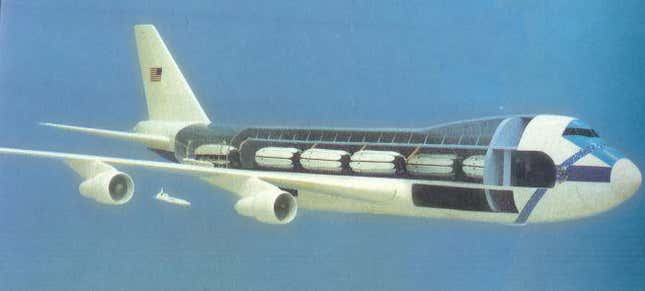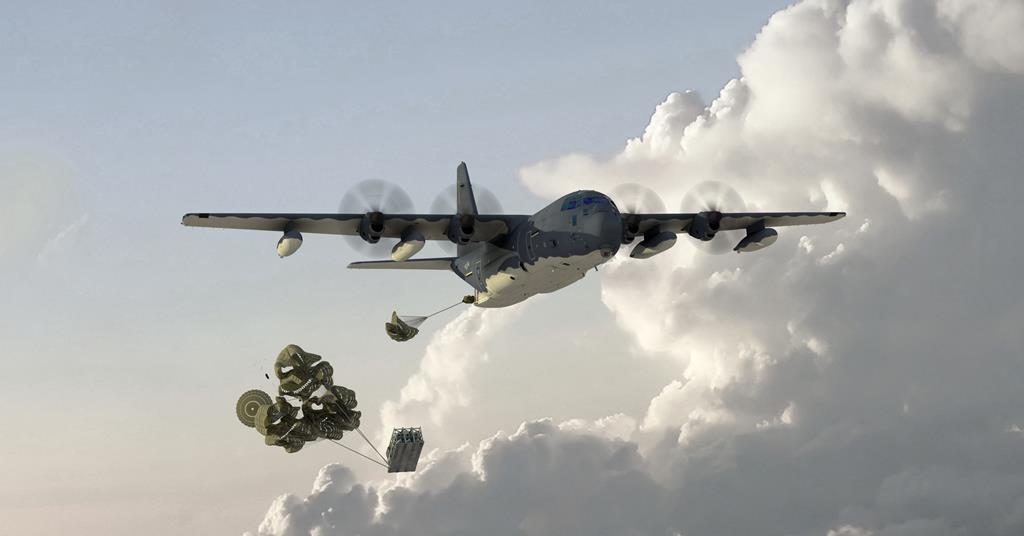In_A_Dream
ACCESS: Top Secret
- Joined
- 3 June 2019
- Messages
- 672
- Reaction score
- 686
Bring Back Blimp/Balloon Bombardment.

It only looks narrow because the wings are so big. Compared to the B-36 it was slender, compared to the B-47 it was fat.Just being an automotive engineer I had always tthoughtthe buff was so slender was because it didn't need to carry 300+ people. It was designed around the ordnance. Just because a widebody airliner isn't optimized for alcms doesn't mean it can't still do that mission.
It looks narrow because it IS narrow. Take the wings out of the equation and it's fuselage is still noticeably narrower than commercial aircraft. They don't call those things, "wide-bodies" for nothing.It only looks narrow because the wings are so big. Compared to the B-36 it was slender, compared to the B-47 it was fat.Just being an automotive engineer I had always tthoughtthe buff was so slender was because it didn't need to carry 300+ people. It was designed around the ordnance. Just because a widebody airliner isn't optimized for alcms doesn't mean it can't still do that mission.
The Bombardier Global 6000 is used as:
You could also build business jets with aesa/ datalinks and internal aams.... But no one talks about that
TouchéThe Bombardier Global 6000 is used as:
You could also build business jets with aesa/ datalinks and internal aams.... But no one talks about that
Saab Globaleye AEW,
Saab Swordfish MPA,
RAF Raytheon Sentinal surveilance aircraft,
USAF E-11A communications aircraft,
Israel uses the Gulfstream G550 for the Eitam AEW system.
Militarized commercial aircraft are not uncommon. And since the B-21 has half the cruise missile capability of the B-2 (a single 8 round rotary launcher) a cruise missile carrier for stand-off weapon delivery seems a decent idea to me. Use the B-21 for the high threat environments, and use something derived from a long range airliner to launch cruise missiles from outside the range of air defenses.
How do you know B-21 have a single 8 round rotary launcher ??The Bombardier Global 6000 is used as:
You could also build business jets with aesa/ datalinks and internal aams.... But no one talks about that
Saab Globaleye AEW,
Saab Swordfish MPA,
RAF Raytheon Sentinal surveilance aircraft,
USAF E-11A communications aircraft,
Israel uses the Gulfstream G550 for the Eitam AEW system.
Militarized commercial aircraft are not uncommon. And since the B-21 has half the cruise missile capability of the B-2 (a single 8 round rotary launcher) a cruise missile carrier for stand-off weapon delivery seems a decent idea to me. Use the B-21 for the high threat environments, and use something derived from a long range airliner to launch cruise missiles from outside the range of air defenses.
Hopefully all of that get mitigated by buying a full fleet of 100-170. That said, if the CPFH or maintenance costs for the LO are cost prohibitive they can always go the route of having T-7's at the base to keep up the beans on approaches and the like, not to mention those pesky flight hours so you can continue to get your flight pay...the B-2's do this with T-38's.These 2 tier force structures sound great, a real cash saver.
In reality, you still need a fleet of stealth/magnetic direct drive aircraft, for your peer on peer war. If you then have a second fleet, you dont use your first fleet, which still needs training time, engineer time, upgrades, and will eventually need replacing when technology changes.
so it may seem gold plating, to fly your superdooper bomber, just to lob cheap cruise missiles at guys in flip-flops, but your keeping your pilots current, your using up hours on your airframes, so you can buy the next one.
Because that'll make it directly capable of employing a multitude of payloads certified with the AF rotary launcher, seems like a logical decision seeing that its supossed to have exactly half the B2 capacity.How do you know B-21 have a single 8 round rotary launcher ??The Bombardier Global 6000 is used as:
You could also build business jets with aesa/ datalinks and internal aams.... But no one talks about that
Saab Globaleye AEW,
Saab Swordfish MPA,
RAF Raytheon Sentinal surveilance aircraft,
USAF E-11A communications aircraft,
Israel uses the Gulfstream G550 for the Eitam AEW system.
Militarized commercial aircraft are not uncommon. And since the B-21 has half the cruise missile capability of the B-2 (a single 8 round rotary launcher) a cruise missile carrier for stand-off weapon delivery seems a decent idea to me. Use the B-21 for the high threat environments, and use something derived from a long range airliner to launch cruise missiles from outside the range of air defenses.
The hybrid or full BWB is about the only compelling non-LO option especially as it looks as ifBest guess, if there's a need for a non LO stand-off/low threat JDAM truck one of those blended wing body concepts will step into that roles and maybe the KC-10 replacement and/or C-5 replacement. FWIW the Lockheed BWB had two very large unpressurized cargo bays on either side of the pressurized center bay. Those could easily be turned into bomb bays if the need arose.
Thanks Marauder, it was the hybrid one I had in mind. The Boeing BWB's have a bit more pressurized area and pressure vessel isn't cylindrical like the LM concept.The hybrid or full BWB is about the only compelling non-LO option especially as it looks as if
the roll-on/roll-off palletized munition launchers for the airlifters will be a thing.
TLDR -Rapid Dragon experimentation campaign evaluates delivering long-range strike weapons via military cargo aircraft at Northern Edge 21
I don't know how well it'll work for glide munitions, given it gets ejected partially from the aircraft by drag.
For a westpac scenario, C-17s will have little use in terms of transport, since operating within the first island chain is a no-no. Hence the increased focus on stand off capabilities. Most of the transport requirement (both fire and support) will be met by ships.Also, not nearly enough C-17s available as it is.
Not with the current state of the US Navy and US Merchant Marine, it won't.Most of the transport requirement (both fire and support) will be met by ships.
USN has about 20 million ft² of (surge+)sealift capacity, and plenty of forward stockpiling positions as far as westpac is concerned(guam being the primary one).Not with the current state of the US Navy and US Merchant Marine, it won't.Most of the transport requirement (both fire and support) will be met by ships.
They'll be flying in materiel, if rockets don't take that job or they just move to do strike with them and cut out all the nonsense.For a westpac scenario, C-17s will have little use in terms of transport, since operating within the first island chain is a no-no. Hence the increased focus on stand off capabilities. Most of the transport requirement (both fire and support) will be met by ships.Also, not nearly enough C-17s available as it is.
And if under any circumstance, the use cases for C-17 as a transporter are to open up, like paratrooping and force projection inside of first island chain, the theater will first need to be pummelled with overmatched number of strikes with stand off munitions to degrade enemy's area denial systems.
From C-17 and C-130
So EC-130's are dropping payloads, very interesting test vehicle. Just a one-off test, or more to come for these special Hercules?The SDPE office, along with its partners, Air Force Futures, Air Force Special Operations Command, Air Mobility Command, U.S. Special Operations Command Det 1, and the 412th Test Wing, completed its first system-level flight test on EC-130SJ and C-17A aircraft.
That would take money from the bomber program (whether it be B-21 or B-52 upgrade, thats just how the colour of money effects DoD). You can do the same from 600+ C17 and C-130.Starting with a clean piece of paper why not design a manned/unmanned airframe about the size of a Boeing 777 with dispensers/bays for the widest possible range of stand-off weapons and fuel efficient engines?

 www.sandboxx.us
www.sandboxx.us
Edit your cookie settings

Newsroom
Rapid Dragon Demonstrates Palletized Munition Capability In First C-17 And EC-130 System-Level Demonstrations
High above the New Mexico desert, mobility aircraft air-launched surrogate cruise missiles in the first demonstration of a palletized strike mission
ORLANDO, Fla., Sept. 21, 2021 – In partnership with the Air Force, Lockheed Martin (NYSE: LMT) recently deployed Rapid Dragon munition pallets from C-17 and EC‑130 aircraft and released surrogate JASSM-ERs in system-level flights conducted over White Sands Missile Range, New Mexico. Rapid Dragon is a fast-paced U.S. Air Force Strategic Development Planning and Experimentation (SDPE) program that has moved from concept to surrogate missile deployment in just 10 months.
“These Rapid Dragon deployments represent the first end-to-end demonstration of a palletized strike mission, from rolling missile pallets onto an aircraft to in-flight missile release,” said Scott Callaway, Lockheed Martin Advanced Strike Programs director. “They are a big step toward showing the feasibility of the palletized munitions concept and the ability of mobility aircraft to augment the strike capacity of tactical fighters and strategic bombers.”
The Rapid Dragon team conducted an airdrop from a C-17A Globemaster III and another from an EC-130SJ Commando Solo. In both flights, aircrews deployed a pallet at an operationally relevant altitude. Once stabilized by parachutes, the pallets released surrogate missiles in quick succession, each aerodynamically identical to a JASSM-ER.

A Rapid Dragon pallet deploys from a C-17 aircraft over White Sands Missile Range. The demos covered all aspects of a palletized strike mission up to and including the release of surrogate cruise missiles.
A ground crew transmitted new targeting information to the Rapid Dragon system during both flights via beyond line-of-sight communications. The ability to retarget missiles while the aircraft is airborne provides combatant commanders the flexibility to respond to changes in a dynamic operational environment.
SDPE and Lockheed Martin are conducting additional tests in coming months, culminating in an MC‑130J airdrop of a real JASSM-ER under powered flight by the end of 2021.


